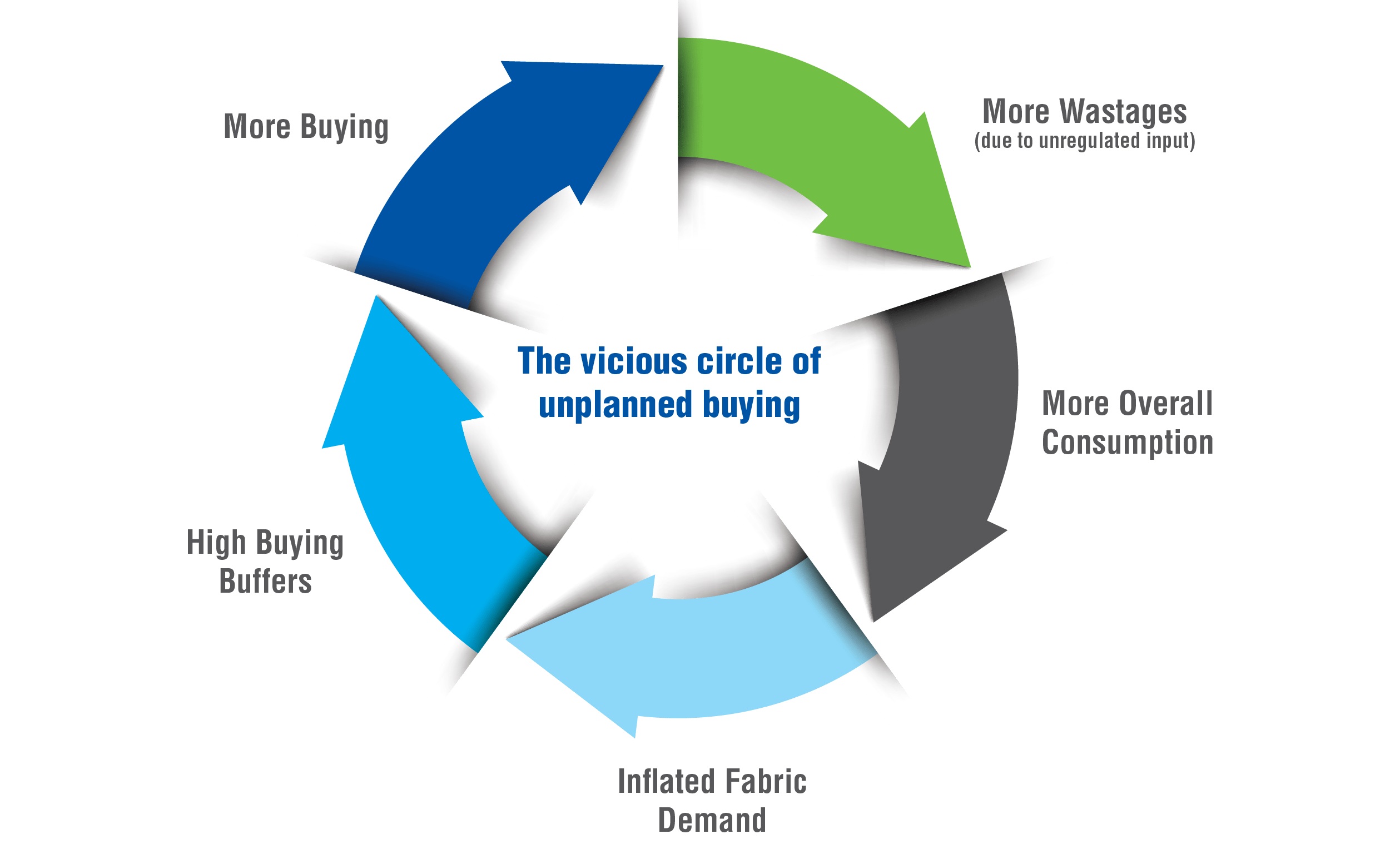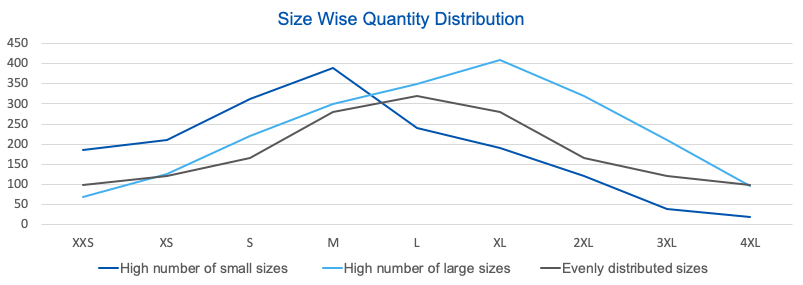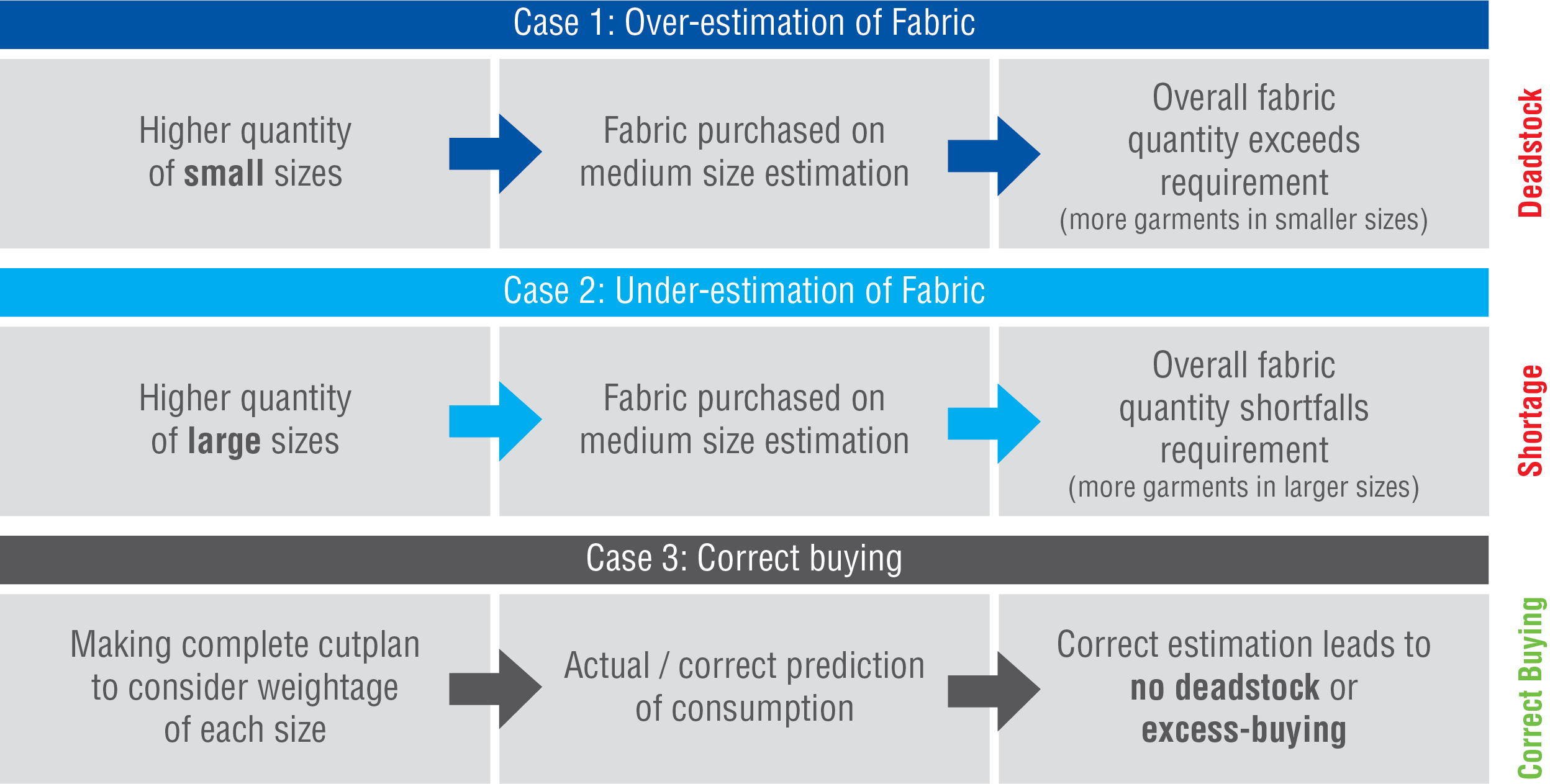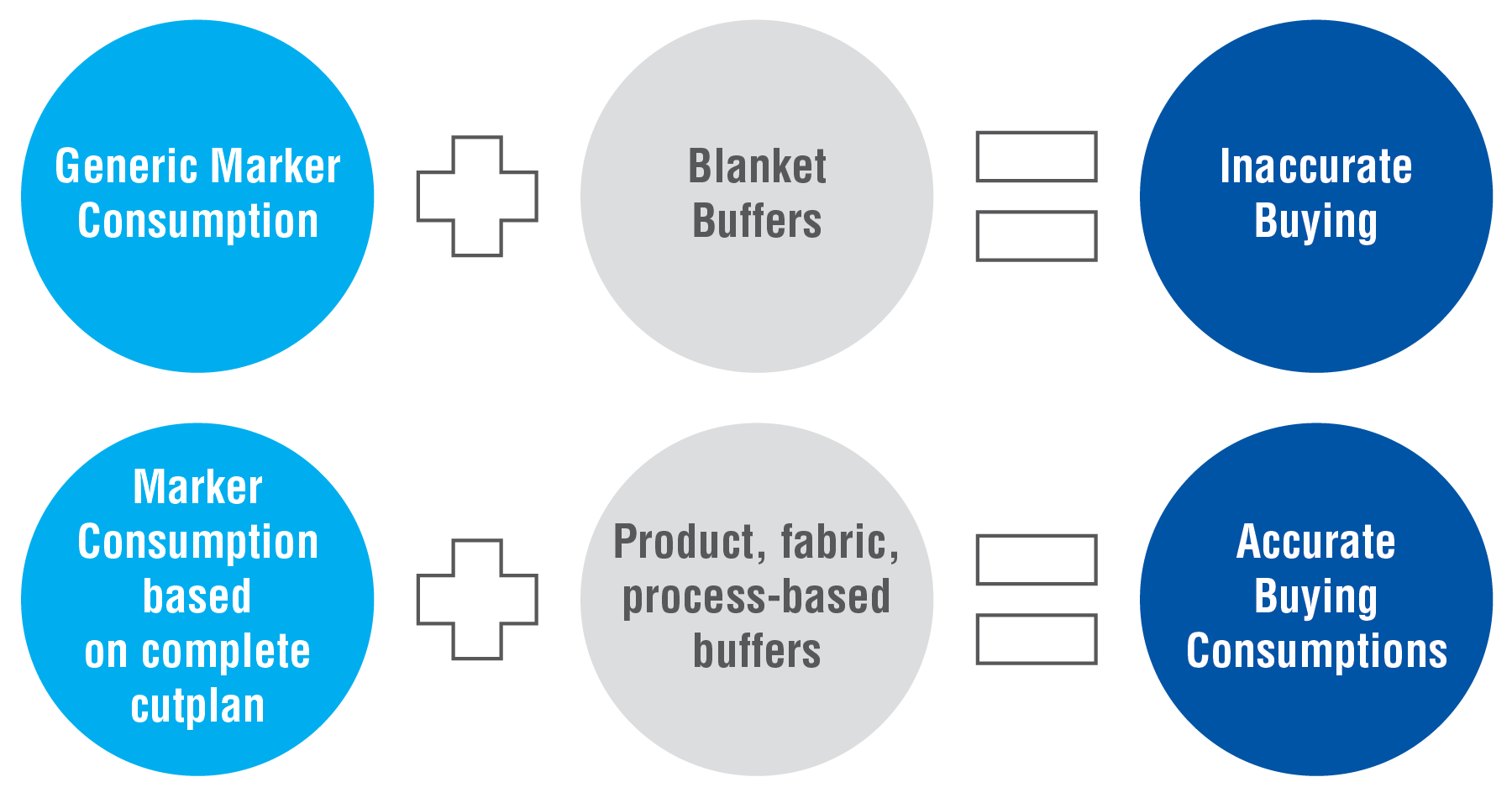Smart fabric buying: Necessary steps and challenges
by Coats Digital
Fabric cost is one of the biggest cost factors of the garment manufacturing process trailed by labor cost. Manufacturers around the globe have been grappling with different fabric saving measures to make their garment cost more competitive in the current dynamics of the market.
With rising common minimum wages in developing worlds and emerging new manufacturing hubs in third world nations, manufacturers are looking for reliable solutions which can help them regulate and monitor the fabric consumption and purchase, and thus reduce the fabric cost.
Both fabric consumption and purchase are interdependent factors. Generally, people see it as a linear relation i.e. more consumption meaning more purchase. But analysis of fabric use pattern in factories will also tell you that this relation can be seen other way round as well, i.e. more buying also leading to more consumption.

What does correct buying mean?
Right from grocery buying to fabric buying, we face the same challenge. How much to Buy? Buy less and you end up with a short output. Buy more and accumulate excessive & expensive deadstock which will create a dent in your profits.
So, it’s obvious that we must buy only the amount which we will consume. Consumption can be in the form of material which goes in the final product and the amount of material which will inevitably go into process loss due to various reasons (we will discuss these process losses in detail in coming sections).
What steps can be taken?
One can intuitively suggest that we should correct the process at the buying end. It can easily be misunderstood that reduced buying will trickle down the manufacturing chain forcing the cutting, sewing, finishing washing & printing departments to take measures for reducing consumption. This might work in some factories, but it is more likely to remain ineffective if consumption pattern remains the same. It may result is short shipment causing factories to fall back to old practices.
With shorter order quantities and frequent style changes there is very less time available for the production line to adjust to the constrained input pressure. There is hardly any time and resource available with the factory to keep order by order material utilisation tab in each department. Reports generated from ERP lack decision making intelligence and they are mostly tables of data without any actionable item.
So, from where does the corrective action start?
As we discussed earlier, correct buying and correct consumption are interdependent. Correct buying is the science of predicting future material consumption and wastages / process Loss which must be considered and buying just the amount to fulfil it.
Predicting fabric consumption – Current most common methods
Nearly every fabric buying unit in the garment industry has adopted a set of buying prediction template. Most common of them involves a generic marker ‘one-piece-from-each-size’ and the addition of some blanket buffer on top of it. The problem with the above method is, all the size quantities get equal weightage in the consumption calculation. So, in cases where we have a greater number of small sizes, the above method will result in more fabric buying and in cases where there is more number of pieces in larger sizes, it will result in lesser buying.


So, our first learning for correct fabric buying is – each size quantity should get weighted representation in consumption calculation.
The proper way to represent each size according to its quantity is making a complete cut plan rather than making one single generic marker with one piece from each size.
Adding right buffers on marker consumption
As commonly seen, many factories around the globe add a blanket buffer on top of marker consumption to compensate for the process losses which occur during manufacturing and storing goods.
There are many kinds of process losses like end loss, end-bit loss, ticket length shortage, part replacements, splicing wastages, fabric damages, testing and sampling losses etc. These losses are dependent on the product being made, fabric or material used, the quantity of output and mostly on material planning and production technique. Due to the above variables, some or the other process loss occurs each time an order is executed. This process loss changes as per order vis-a-vis fabric. Ideally, if any factory can find the accurate value of process loss and uses it as a buffer on top of marker consumption, a better buying consumption can be achieved which will reduce the chances of overbuying or under buying.

Challenges
A. Unavailability of complete size breakdown at the time of buying
The major challenge manufacturers usually face while making complete cutplan to derive accurate marker consumptions is that at the time of buying they usually don’t have size wise breakdown of quantity. They only have a “total booking quantity” and “number of sizes” in which they might come.
For frequently running orders this problem can be solved by considering the historical data of similar styles from the same buyer. Using matching filters factories can see the ratio of quantity in different sizes in the past orders. Using those ratios, current quantity can be divided and used for marker making. The marker consumption hence achieved would be much closer to actual production scenarios. Hence, they prove to be helpful in buying accurately. It’s almost like the way we plan our Christmas dinner when we invite our friends and have no idea how much to cook. It will always be wise to look at how much they ate in the past.
B. Unavailability of correct buying buffers
It is like a challenge which can only be solved with discipline and coordination. When generally asked in the factories that whether they have the record of their process losses, they would admit recording it diligently through different challans and lay slips in hard copies. But there is seldom any system in place which can record, mine and report the process loss data accurately when required.
A system which could filter data based on matching parameters and suggest what has been the historical process loss trend for similar orders in the past. So, in place of adding a blanket buffer of 5% (let’s assume) a much closer figure of 4.6% or 5.2% can be used (which might be the actual case). This can prevent overbuying (in case actual wastage is lesser than blanket buffers) or under buying (if actual wastages are higher than blanket buffer per cent.
Based on rigorous process studies and continues feedback from hundreds of clients, Coats Digital’s FastReactFabric (Formerly IntelloBuy) ensures correct fabric buying by automating all the necessary conditions discussed above in detail. FastReactFabric is designed to help optimise fabric cost at the fabric estimation stage itself. It aids manufacturers in buying the most accurate amount of fabric for their orders, thus, reducing fabric cost.

7 tips for better Fabric Cutting Room Productivity
All Blog Categories
- Fabric Optimisation
- Corporate
- Design and Develop
- Method Time Cost Optimisation
- Production Planning
- Shop floor execution
- Supply Chain Solutions
- Sustainability
- Videos
